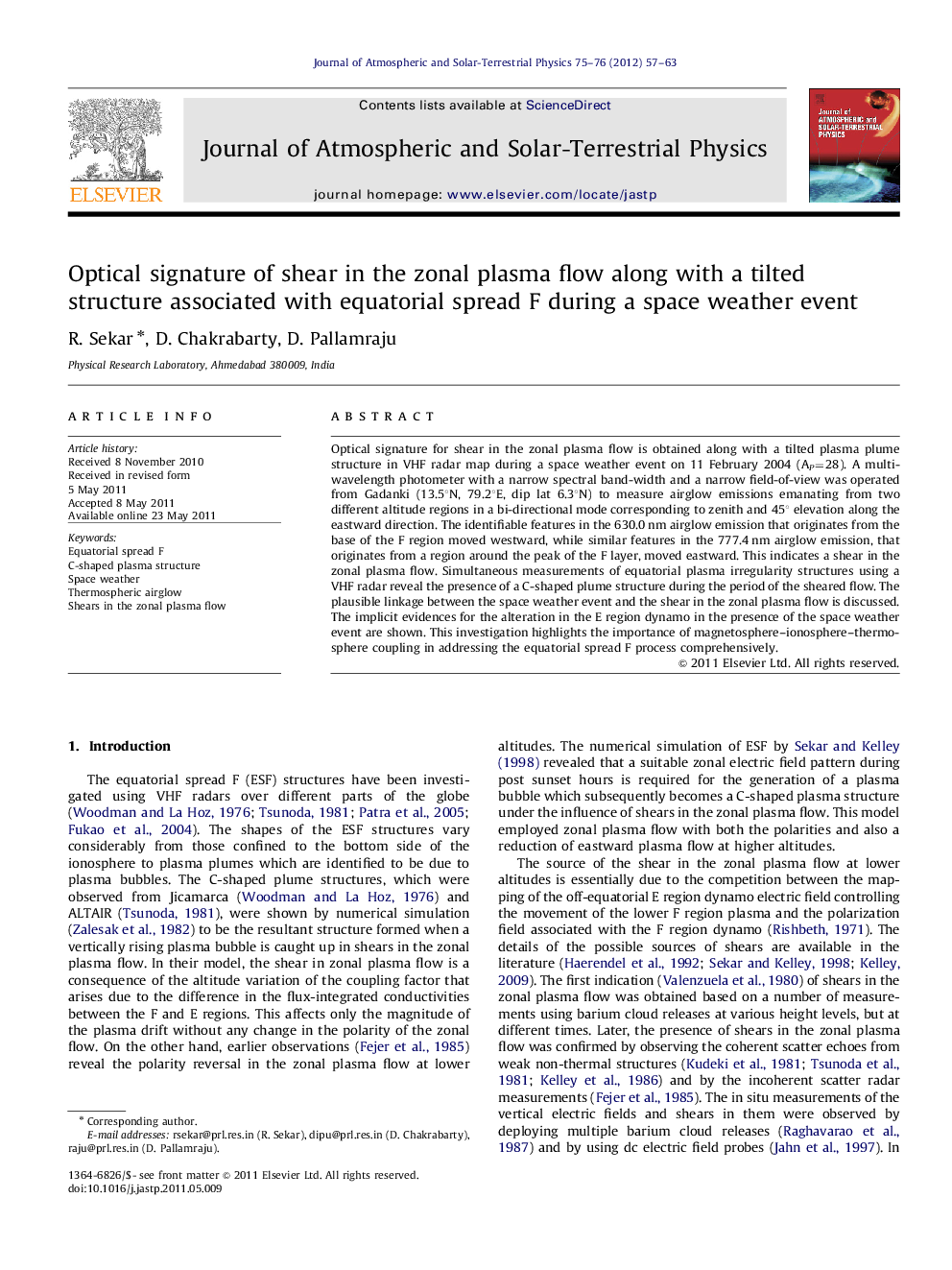| Article ID | Journal | Published Year | Pages | File Type |
|---|---|---|---|---|
| 1776962 | Journal of Atmospheric and Solar-Terrestrial Physics | 2012 | 7 Pages |
Optical signature for shear in the zonal plasma flow is obtained along with a tilted plasma plume structure in VHF radar map during a space weather event on 11 February 2004 (AP=28). A multi-wavelength photometer with a narrow spectral band-width and a narrow field-of-view was operated from Gadanki (13.5°N, 79.2°E, dip lat 6.3°N) to measure airglow emissions emanating from two different altitude regions in a bi-directional mode corresponding to zenith and 45° elevation along the eastward direction. The identifiable features in the 630.0 nm airglow emission that originates from the base of the F region moved westward, while similar features in the 777.4 nm airglow emission, that originates from a region around the peak of the F layer, moved eastward. This indicates a shear in the zonal plasma flow. Simultaneous measurements of equatorial plasma irregularity structures using a VHF radar reveal the presence of a C-shaped plume structure during the period of the sheared flow. The plausible linkage between the space weather event and the shear in the zonal plasma flow is discussed. The implicit evidences for the alteration in the E region dynamo in the presence of the space weather event are shown. This investigation highlights the importance of magnetosphere–ionosphere–thermosphere coupling in addressing the equatorial spread F process comprehensively.
► Observation of C-shaped plume structure over the Indian zone during a space weather event. ► Shears in the zonal plasma flow inferred from airglow emissions from two altitude regions. ► The role of the space weather event in the development of the C-shaped plasma structure is explored.
